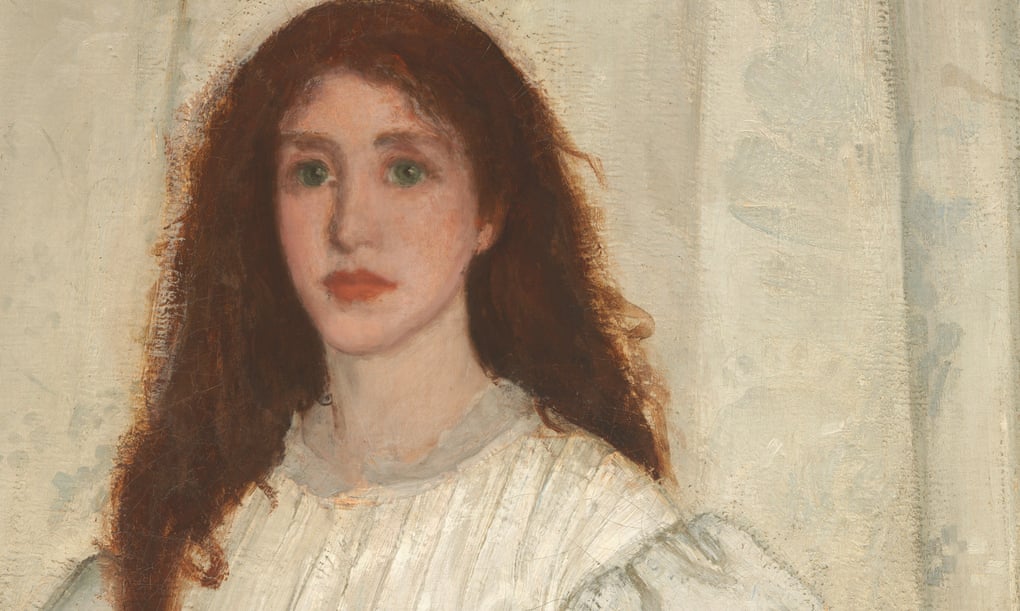Whistler’s Woman in White: Joanna Hiffernan at the Royal Academy of Arts

The Whistler’s Woman in White exhibition at the Royal Academy of Arts explores the early life of James Abbott McNeill Whistler and his relationship with mistress and business manager Joanna Hiffernan. Whistler, who has been called the first “contemporary artist”, was an American-born artist and a prominent member of the Aesthetic “art for art’s sake” movement in the latter half of the 1800s.
Unlike fellow artist and friend Gustave Courbet, who said he only wanted to paint what he could see, Whistler experimented with blurred lines, free brushstrokes and white on white colour palettes. He was influenced by Dante Gabriel Rosetti and the Pre-Raphelite movement, as well as “Japonisme” (a broad term for artworks from east Asia). He often referred to his work in musical terms, such as “symphonies” (like the three Symphony in White paintings of Hiffernan which appear in this show) or “nocturns”.
This exhibition takes viewers on a journey through Whistler’s life and relationship with Hiffernan. The first part of the gallery is broken into two parts by a blue, 3D wall. To the right is an overview of Whistler’s early work in London, such as the black oil on canvas Wapping (1860-4), which portrays three seated figures (including Hiffernan) sitting against a backdrop of boats and canals. Even Whistler’s early works were criticised for their “lack of moral or story”, which highlights his position in the “art for art’s sake” movement from the beginning.
To the left, one is greeted with other depictions of women in white, such as Gustav Klimt’s Portrait of Hermine Gallia, to contrast and compare with the Symphonies. The next section highlights the three Symphony in White paintings, No 1: The White Girl (1861), No 2: The Little White Girl (1864) and No 3 (1867). This room also shows Whistler’s A White Note (1862), in which Hiffernan stands by a balcony, the dirty white and blue of her dress merging with the brown wall next to her. This piece emphasises Hiffernans rejection of realism in favour of free, light brushstrokes.
The Woman in White was meant to be the 27-year-old artist’s debut at the Royal Academy. In the oil painting, Hiffernan is wearing an informal white belted gown and appears in front of a white curtain, her dark red hair contrasting with the creamy tones. She stands on a wolfskin placed on a blue, flowery carpet and holds a white lily. The piece was controversial and was rejected by the Royal Academy and the Paris salon. Some found the white on white “bizarre” and others felt the work was “incomplete”.
The painting, whilst intimate, does not convey much about the model’s personality. Her face was deemed unflattering by some, and others thought she looked like a “ghost” because of the pale colours. Critics have suggested the portrait represented the woman’s “loss of innocence” following her wedding, but Whistler dismissed any attempts to put a deeper meaning on his artwork.
The rest of the gallery highlights the artist’s print pieces and showcases his influences and contemporaries, such as Courbet, Dante Gabriel Rosetti and Japanese artist Utagawa Hiroshige. The display is brilliantly executed and provides a greater understanding of not only this artist, but also the time he was painting in.
This show treats us with personal details, such as handwritten letters and a collection of bills showing the materials Whistler had bought to complete The White Girl. We are given insight into Whistler’s relationships, not just with Hiffernan, but also with Coubert. In the final gallery, which contains the latter’s landscapes and his own studies of Hiffernan (three paintings, almost identical but with small changes, like unruly hair in one and a darker tone in another), we are given an insight into the seemingly romantic relationship the three of them shared, with Hiffernan singing Irish folk songs by the sea.
Whistler’s Woman in White is a beautifully curated and informative exhibition that leaves the viewer with a broader understanding of the life and times of the artist and those around him.
Sophia Moss
Photo: Harris Whittemore Collection
Whistler’s Woman in White: Joanna Hiffernan is at the Royal Academy of Arts from 26th February until 22nd May 2022. For further information visit the exhibition’s website here.



















Facebook
Twitter
Instagram
YouTube
RSS